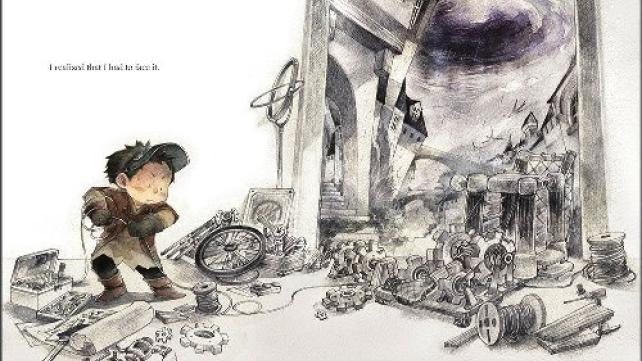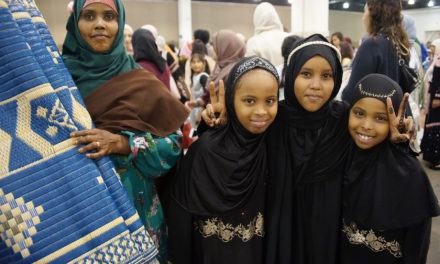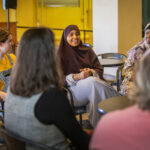The quality and quantity of children’s books written by Muslim authors has improved significantly over the past years. While the future of Islamic literature looks bright, publishing companies, authors, and illustrators still have a way to go to catch up with the flawlessness of some of the classic children’s books. Fortunately, there are gems that have been written by non-Muslim authors that still capture the essence of Islamic values that parents and educators can appreciate. One of these is the #1 New York Times Best Selling book, What Do You Do With a Problem, by Kobi Yamada.
From the dedication page, What Do You Do With a Problem, captures the Islamic principle of accepting the wisdom behind Divine decree – both the good and the bad. The author dedicates his book to his two children and writes, “May you have enough challenges to keep life interesting and plenty of love to make it all worthwhile.” Indeed, there is no sugarcoating life; there will be tests, but those who have faith and are patient will find endless rewards. These words echo the hadith of Prophet Muhammad, peace and blessings be upon him, in which he said,
“Wondrous is the affair of the believer for there is good for him in every matter and this is not the case with anyone except the believer. If he is happy, then he thanks Allah and thus there is good for him, and if he is harmed, then he shows patience and thus there is good for him.”
(Sahih Muslim)
We learn in this book that life’s challenges and problems teach us valuable lessons about ourselves and equip us with the necessary tools to overcome even the biggest obstacles. The language and simplicity of the picture book format is perfect for explaining this complex idea to children in the target ages 4-8. The story begins with an innocent child describing a strange feeling. “I don’t know how it happened, but one day I had a problem. I didn’t want it. I didn’t ask for it. I really didn’t like having a problem, but it was there.” The problem is depicted in minimal line drawn illustrations as a small dark cloud looming above a little boy’s head. It follows him wherever he goes, and the more the child tries to avoid it or ignore it, the more the cloud grows.
The child becomes increasingly worried about this problem and how it will affect his life. Will it swallow him up? Will it take away his things? Soon the boy discovers that the more he tries to hide from his problem or run away, the bigger it gets. Until finally, he musters the courage to face his problem head on, and in doing so, he discovers something beautiful. In the author’s words, he says, “My problem held an opportunity! It was an opportunity for me to learn and to grow. To be brave. To do something.” Once the young hero makes this amazing discovery, the illustrations become brighter and warmer with hints of yellows and orange.
The moral of the story can be found in the very last page, in which the reader discovers that every problem, big or small, is an opportunity for something good. Just as in the Quran, Allah promises:
“So, surely with hardship comes ease.”
(Surah Ash-Sharh, 94:5)
What Do You Do With a Problem is a great book to explain the concepts of Divine decree, mental fortitude, and worldly trials with Muslim children. It is important that our youngsters know that although problems sometimes seem overwhelming, there will always be light at the end of the tunnel. Allah promises us ease after hardships, and He states that everyone will be tested in life. He says:
“And We will surely test you with something of fear and hunger and a loss of wealth and lives and fruits, but give good tidings to the patient, Who, when disaster strikes them, say, “Indeed we belong to Allah , and indeed to Him we will return.” Those are the ones upon whom are blessings from their Lord and mercy. And it is those who are the [rightly] guided.”
(Surah Al-Baqarah, 2:155-157)
Not only can children benefit from this book, but also parents, educators, and other caregivers. The book is described by the publisher, Compendium, as a story for anyone, at any age, who has ever had a problem that they wished would go away. It’s a story to inspire others to look closely at their problems and understand why they are there. The goal of What Do You Do With a Problem? is to encourage children to examine issues carefully and recognize the potential they may possess. Instead of running away, perhaps what we need to do is face our problems to find the solution and the strength to move on.
What Do You Do With A Problem is the second in the What Do You Do series by Kobi Yamada. The first of the trilogy is What Do You Do With an Idea and the third is What Do You Do With a Chance. For more about the author and his idea behind the series, visit:
https://www.readbrightly.com/kobi-yamada-on-embracing-our-ideas-and-the-chances-that-come-our-way/#0
By Wendy Díaz
Wendy Díaz is a Puerto Rican Muslim writer, award-winning poet, translator, and mother of six (ages ranging from infant to teen). She is the co-founder of Hablamos Islam, a non-profit organization that produces educational resources about Islam in Spanish (hablamosislam.org). She has written, illustrated, and published over a dozen children’s books and currently lives with her family in Maryland. Follow Wendy Díaz on social media @authorwendydiaz and @hablamosislam.














